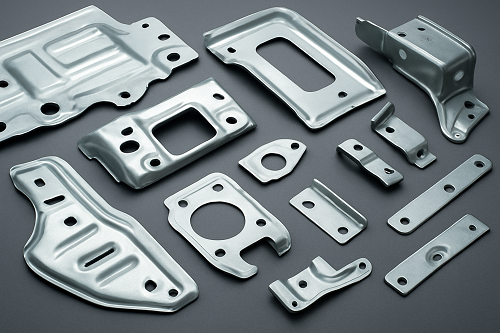Automotive metal stampings are essential components used in the manufacturing of vehicles, providing strength, precision, and consistency in a wide range of automotive parts. These stampings are created through advanced stamping processes such as blanking, bending, punching, and embossing, which shape sheet metal into precise forms. They are widely used in the production of body panels, brackets, engine components, chassis parts, heat shields, and structural reinforcements. By ensuring dimensional accuracy and uniformity, metal stampings help maintain vehicle safety, performance, and durability.
Automotive metal stampings are known for their high strength, lightweight properties, and excellent design flexibility. They can be manufactured from a variety of metals, including steel, aluminum, and stainless steel, depending on the application requirements. Their corrosion resistance, dimensional stability, and ability to withstand high mechanical stress make them suitable for both structural and decorative components. Modern stamping processes also allow for tight tolerances and complex geometries, ensuring reliable integration into vehicle assemblies. Additionally, metal stampings support cost-efficient mass production while maintaining consistent quality across large volumes.
Automotive metal stampings are available in various thicknesses, ranging from thin sheets for lightweight body panels to thicker gauges for structural reinforcements. The choice of material grade depends on the required strength, formability, and resistance to heat and corrosion. Surface treatments such as galvanizing, electroplating, and powder coating can be applied to enhance protection against wear and rust. Precision stamping equipment ensures high repeatability, with tolerance levels often maintained within microns to meet the stringent standards of the automotive industry.
During application, automotive metal stampings must be installed following strict engineering specifications to ensure safety and performance. They are typically supplied as ready-to-assemble parts, which can be welded, bolted, or riveted into place. Care must be taken to match the correct stamping with its intended application, as improper installation may affect structural integrity. For manufacturers, it is important to adhere to quality control measures such as inspection for dimensional accuracy, edge quality, and surface finish to guarantee reliability in mass production.
While primarily used in the automotive sector, metal stampings also play an important role in related industries such as heavy trucks, off-road vehicles, agricultural machinery, and aerospace. Their versatility and strength make them indispensable in any field that requires durable, precision-engineered metal components. Automotive suppliers and OEMs rely heavily on stamping technology for producing both interior and exterior components, from small clips and brackets to large body panels.
The primary customer groups for automotive metal stampings include original equipment manufacturers (OEMs), tier-one and tier-two automotive suppliers, and specialized component manufacturers. aftermarket suppliers, repair workshops, and custom automotive builders utilize stamped components for vehicle assembly, modification, and repair. These groups demand high-quality, durable, and cost-effective solutions that meet industry safety and performance standards, making metal stampings a critical supply in the automotive value chain.
